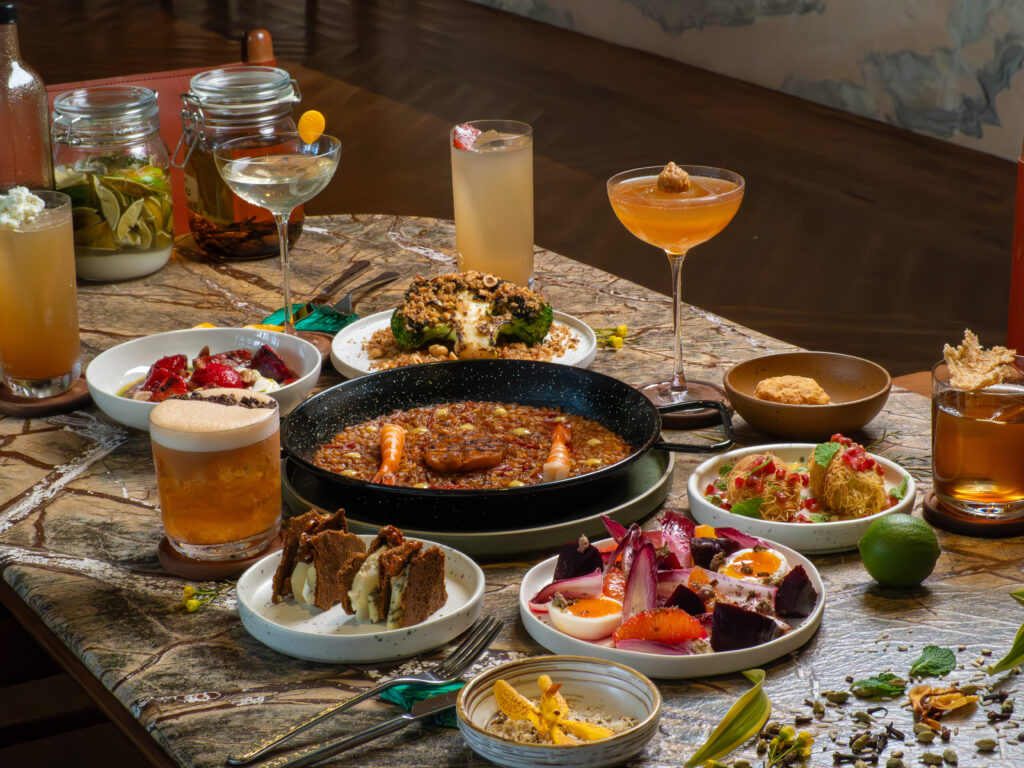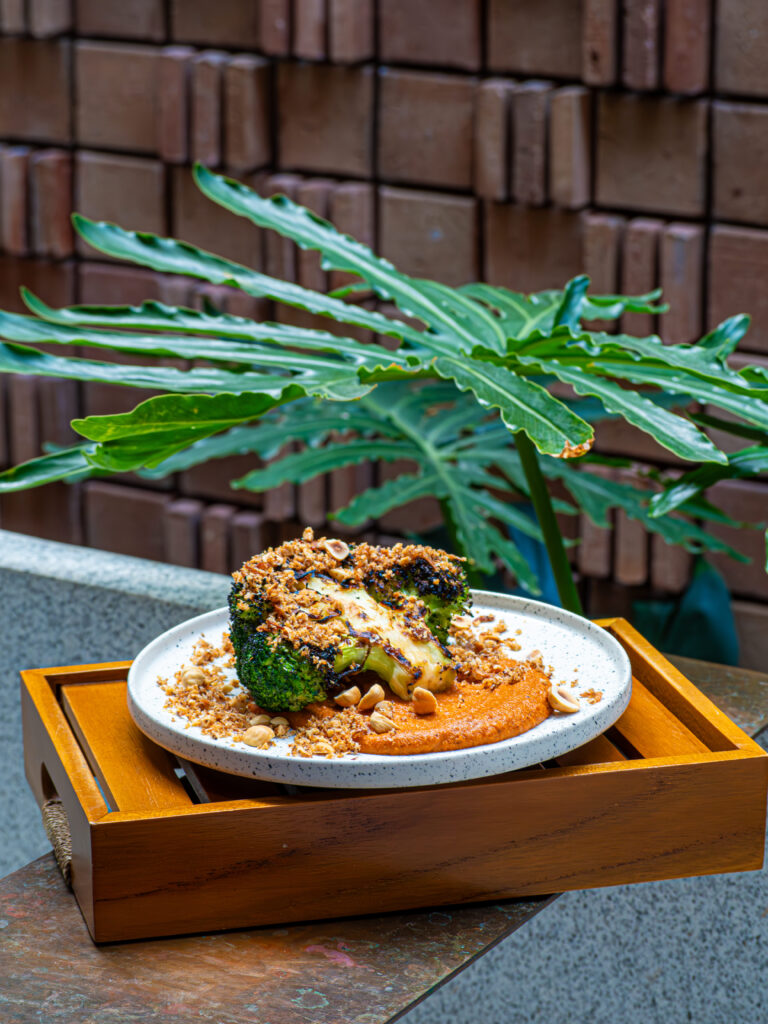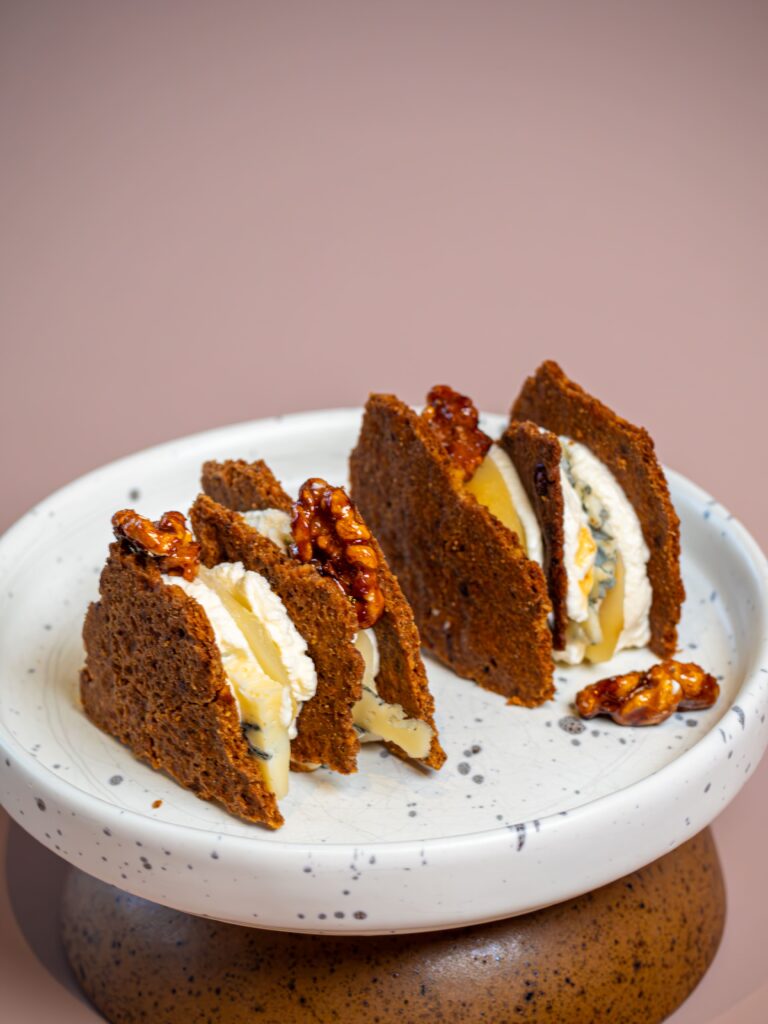Yellow Fin Horse at Else Hotel transforms a 90-year-old landmark into a gastronomic hub.
The near-centennial Lee Rubber Building proudly overlooks Chinatown’s historic landscape. Once the tallest building in Kuala Lumpur, the Art Deco-inspired structure has undergone several incarnations throughout its long and weary lifetime, serving as the holiday residence of the city’s fifth and last Kapitan, Yap Kwan Seng, in the 1930s, and the WWII headquarters of the Japanese secret police in the 1940s.
In 2022, the building, alongside other iconic landmarks of in the area, underwent a rapid, transformative facelift. Every wrinkle and worn-and-torn corner was reconstructed and repurposed with surgical precision, giving rise to the stunning Else Boutique Hotel, and more pertinently, a restaurant sequestered away within the revival project’s fourth floor: Yellow Fin Horse.

Image credit: Yellow Fin Horse
This hidden gem is one of the few trail-blazers pioneering the open-fire cooking concept in KL, showcasing fresh, ingredient-forward dishes with a seafood as a mainstay, elevated by smoky flavours.
Chef Jun Wong, the veritable head of the operation and its culinary visionary, has long been a torchbearer for simple cooking. Despite a several-years-long foray into the haute cuisine scene working at the three Michelin-starred Robuchon au Dôme in Macau, her approach defiantly runs counter to fine dining’s stuffy doctrine. Instead, the restaurant focuses on bold flavours derived from high-quality ingredients and masterful execution.
It’s a philosophy best defined by the phrase, “elemental cooking”, perfectly summing up the essence of her latest venture at Yellow Fin Horse. This approach harkens back to the Palaeolithic period when human beings cooked over an open flame, alongside other age-old preservation and curing techniques such as picking, aging, and salting. In a sense, time is an essential ingredient in the restaurants cooking process.
Stripping down and relying on intuitive, primordial cooking techniques also enables Wong to cross-pollinate elements from different cultural cuisines, without being confined to a specific tradition.


Image credit: Yellow Fin Horse
If you couldn’t already tell by their cooking ethos, if there’s one thing Yellow Fin Horse refuses to be, it’s pretentious. Dimly-lit and intimate, the restaurant and menu is defined by simple sophistication as opposed to the put-on airs of formality, bringing food back to earth – where it belongs.
Dishes on their menu rarely consists of more than five components per plate, ensuring dishes are balanced, every ingredient purposeful, all while leaving little leeway for error in its execution. Amongst the refreshingly to-the-point lineup are entrées such as smoked petuna trout (known as the wagyu of the sea) and the deceivingly simple burnt cabbage. This graduates into heartier mains like the flame-grilled squid accompanied by charred okra in a sepia garlic spinach sauce, as well as the charred, caramelised wagyu short rib.
This intentionality extends beyond taste and show. A nod to the food wastage accumulated in most fine dining establishments, Wong and the team make a conscious effort to ensure operations are as sustainable as possible by embracing a simpler, laid-back presentation to minimise waste.


Image credit: Yellow Fin Horse
Reflecting its adaptive reuse of a historic landmark into a contemporary culinary gem, Yellow Fin Horse pays homage to the past while introducing a refreshing approach to dining. Here, Malaysian diners are urged to peer past modern facades, and appreciate the intentional heart-and-soul elements that define good food.
Also read:
How 103 Coffee is Redefining Malaysia’s Coffee Culture
Petaling Street Cafe Guide: 9 Must-Try Spots in 2024
